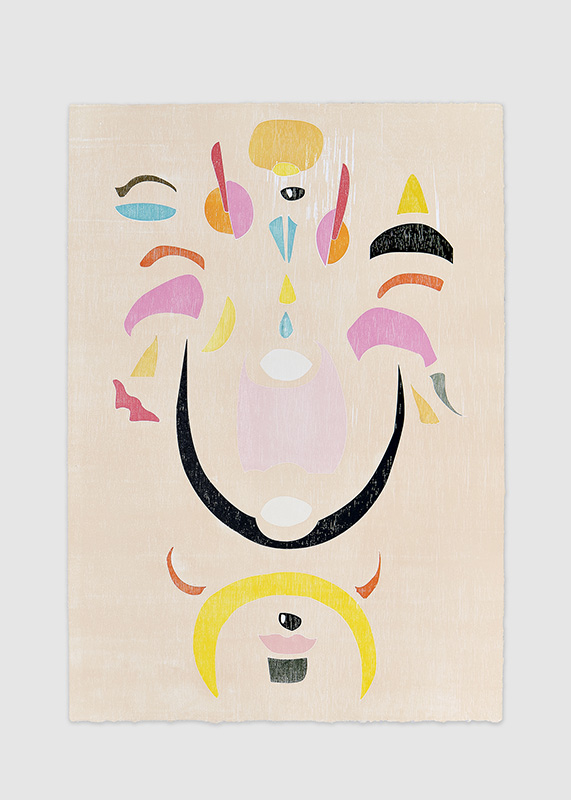
Review
Fallen Like Snake Skin. Mauricio Limón at Pequod Co.
by Verana Codina
Reading time
4 min
Fallen Like Snake Skin is Mauricio Limón’s first solo exhibition at Pequod Co., presenting a selection of works from various projects that the artist has been working on recently.
All of the artworks are noteworthy for what Limón identifies as his ultimate goal as an artist: collaborative production. This form of working is present in the majority of the projects that make up his portfolio, whether in terms of technique, research, or a combination of both. His close links with various agents—artisans, actors, performers, designers—have also contributed to a contagious blending of disciplines and media, including sculpture, design, performance, graphic art, and video, as can be confirmed by a trip through the gallery.
My walk through the exhibition, accompanied by the artist, began in the last two rooms of the space, where six masks and a video are on display. Performing white skin, a work in progress that appears to connect all the works that make up the exhibition, has been ongoing since 2019, and now includes 27 polychromatic, hand-carved wooden masks made in collaboration with Israel Pedraza. On one side, the masks are inspired by motifs drawn from West African tribes; on the other, they follow the influence of Celebrities of the Juste Milieu, Honoré Daumier's busts satirizing the figure of the French politician.
These references converge to produce a startling effect in the object. Although it seems to be "tribal," its facial features are clearly Caucasian. This clash speaks to concerns related to the distribution of power and the value of the object in contemporary art. Like Daumier, Limón makes the connection through parody.
Taking advantage of the theatrical quality inherent in the masks, Mauricio stages scenes in order to activate them, whether through performance or video. In WikiWiki: Trompe l'oeil de la vérité, the artist writes a dialogue for a group of actors—a sketch based on a TV-news format—with the aim of ironically addressing the jargon of contemporary art. Through pompous verbal and bodily language, the characters narrate events related to a fictional artistic scene, revealing how a discourse can become worn out, with repetition making words sound empty, universal, and prone to cliché.
The masks reach their maximum potential in this medium. Put into use, their exaggerated features are intensified, successfully replicating the arrogance typical of a "public-intellectual figure" so common in the world of art and the political agenda.

Though my course through the show began at the end, it actually starts with a series of paintings—which I was later surprised to realize are really woodcuts—whose compositions are built through brightly colored geometric figures on a white background. At first it's these canvas's colors that call our attention, but their meaning comes into focus toward the end of the exhibition, once they're connected to the mask-and-video project. Their striking tones recall the masks. In the use of color, one can trace a process of abstraction in the passage of the figures from the sculptures' volumetrics to the paper's two-dimensional plane.

The rest of the exhibition displays works that continue to tap into artisanal processes and transformational practices, in which objects can become sculptures. One example is Homenaje Isidro, a painting—though close to textile—made in collaboration with the artisan Isidro Ruiz using dry palm leaves. Another is Callos de serpiente, a group of leather sculptures made from decaying sandals typical of Huichol culture, with the participation of the Wirrarika artists Ramón Carrillo and Josefina Venegas.
Collaborative works and interpersonal exchanges like this are a constant that allows the artist to fluctuate between various techniques and aesthetics in which, through an iconoclastic gaze, he rejects the original meanings—as much of the images as of their signifiers—to reconstruct them through play, laughter, and mockery. He thereby reflects on the social dynamics and operations that often become evident in the production of symbolic objects.
Translated to English by Will Noah
Published on May 26 2022